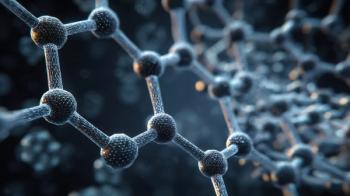
Plenary Lecture: Watching Biochemistry Inside Living Cells and Organisms
Dr. Annette Wilson of the Pittsburgh Conference 2006 Organizing Committee introduced today's plenary speaker, Roger Y. Tsien, Investigator of the Howard Hughes Medical Institute and Professor in the Departments of Pharmacology and of Chemistry and Biochemistry at the University of California, San Diego. Tsien's research has involved designing and building molecules that either report or perturb signal transduction inside living cells.
Dr. Annette Wilson of the Pittsburgh Conference 2006 Organizing Committee introduced today's plenary speaker, Roger Y. Tsien, Investigator of the Howard Hughes Medical Institute and Professor in the Departments of Pharmacology and of Chemistry and Biochemistry at the University of California, San Diego. Tsien's research has involved designing and building molecules that either report or perturb signal transduction inside living cells. These optical reporter molecules also can be used in miniaturized high-throughput screening of candidate pharmaceuticals. His current research goals are to understand how the spatial and temporal dynamics of signal transduction orchestrate complex cellular processes such as gene expression and synaptic plasticity. Improved molecular techniques are needed to see and manipulate small-molecule messengers, protein phosphorylation, and protein-protein interaction in live cells and organisms.
In his talk, Tsien opened with a discussion of luminescent and fluorescent proteins found in the jellyfish Aequorea victoria. His lab uses color changes in a fluorescent protein to track biochemical interactions such as posttranslational modifications, kinase/phosphatase activity, and protein kinase A activity at the edge of migrating CHO cells. Other applications involve laser tweezers that trigger a wave of Src activation with membrane-targeted Src in human umbilical vein endothelial cells. Tsien used animated images of fluorescing cells to demonstrate the applications of the jellyfish protein.
Many corals contain fluorescing proteins as well. Tsien showed the active site of one of the coral proteins expressed in E. coli. His laboratory has developed a full array of the proteins that range from blue to red in color. The proteins have been used to monitor processes such as somatic hypermutation.
Newsletter
Join the global community of analytical scientists who trust LCGC for insights on the latest techniques, trends, and expert solutions in chromatography.




